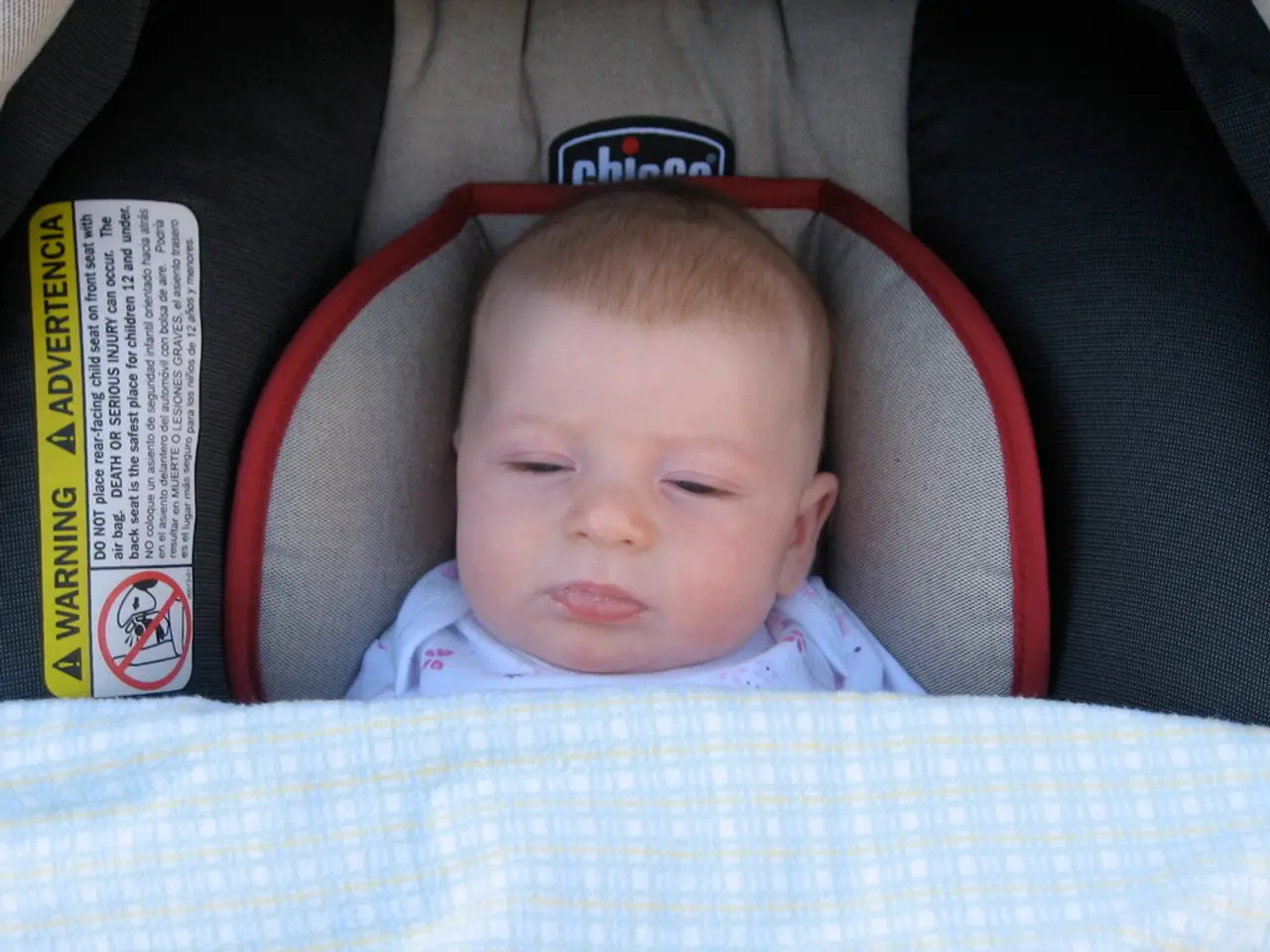Selecting Infant Equipment: Safety Guidelines for Guardians
When it comes to welcoming a newborn into the world, choosing the right baby gear is crucial for ensuring your baby's safety, comfort, and well-being. Here are some essential safety tips to help you make informed decisions.
Inspecting Baby Gear Thoroughly
Providing insights, tips, and considerations empowers parents to make informed decisions. When examining baby gear, it's essential to inspect the fabric for any signs of fraying, tearing, or holes that could pose a safety risk. Check all straps, buckles, and fasteners to ensure they are secure and in good working condition. Inspecting the product features is a crucial step in ensuring the safety and suitability of the gear you are interested in purchasing.
Choosing the Right Crib or Bassinet
Choosing a crib or bassinet that meets current safety standards, with sturdy construction and appropriate spacing between slats, is essential. Gear includes cribs, car seats, strollers, and more, each critical for your baby's well-being. Safety standards for baby gear include stability tests for strollers, CPSC guidelines for cribs, secure harness systems and sturdy bases for high chairs, and government safety standards for car seats.
Selecting Car Seats Wisely
Proper installation of car seats is essential. Read the car seat's instruction manual carefully before attempting to install it. When choosing car seats, follow the American Academy of Pediatrics recommendations by using rear-facing seats for infants and toddlers until at least age 2 or until they reach the maximum height or weight limit the seat allows; afterward, use forward-facing seats with a harness as long as possible, ideally at least until age 4.
Feeding and Everyday Child Products
Ensure items that contact food are BPA-free, food-grade, non-toxic, free of sharp edges or detachable small parts that pose choking hazards, and suitable for maintaining temperature if meals or drinks are carried.
Safe Sleep Items
Use safe sleep items like fitted sheets specific to crib mattresses, wearable blankets or sleep sacks instead of loose bedding, and follow guidelines to create a flat, clutter-free sleeping environment without pillows or extra blankets.
When Traveling
When traveling, choose a car seat that meets the latest safety standards and is appropriate for your baby's age, weight, and height. When flying, bring a car seat approved for air travel to ensure your baby's safety during takeoff, landing, and turbulence. Check with your airline beforehand to understand their specific rules and regulations regarding baby gear. If you are using public transportation, consider baby carriers or slings as they offer a hands-free and secure way to transport your baby.
Selecting a Sturdy Stroller
When selecting a stroller, opt for one that is sturdy, lightweight, and easy to maneuver. Look for strollers with safety features such as a five-point harness system and a stable base.
Reliable Sources of Information
Reliable sources of information on product recalls and reviews include official government websites, parenting websites, online forums, and pediatricians. Remember to prioritize your baby's safety over convenience, even if it means carrying extra gear or taking additional precautions.
Safety Certifications
Safety certifications such as JPMA, ASTM, and CPSC are important to ensure product safety. Regular inspections of baby gear are essential to identify any potential issues or hazards with the gear. Routine inspections help ensure that the gear functions properly, reducing the risk of accidents.
Prioritizing Safety Without Compromising on Comfort or Functionality
The goal is to prioritize safety without compromising on comfort or functionality. Opt for baby gear made from non-toxic materials that are free from harmful chemicals. Examine the overall structure of the gear, including the frame, to ensure it is stable and sturdy. Choose gear made from high-quality materials that can withstand regular use and support your baby's weight.
Promoting Safe Development and Comfort for Babies
These practices help reduce risk and promote safe development and comfort for babies. During long journeys, schedule regular breaks to give your baby a chance to stretch and relax. Avoid using soft mattresses, as they can increase the risk of suffocation or Sudden Infant Death Syndrome (SIDS). Ensure the gear can accommodate your baby's growth and adapt to their changing needs. Inspect the joints, fasteners, and connections of the gear to ensure they are secure and well-made.
Understanding the Significance of Appropriate Gear
Understanding the significance of appropriate gear and its impact on your baby's safety is essential. By understanding the different types of baby gear, identifying essential items, and selecting age-appropriate gear, you can ensure your baby's safety and comfort.
Empowering Parents with a Safety-First Approach
This blog post aims to guide parents through selecting baby gear with a safety-first approach. Regularly inspecting baby gear and ensuring it meets safety guidelines ensures accident prevention, product reliability, peace of mind, and legal compliance. Purchasing baby gear that meets safety guidelines is an investment in your baby's safety and well-being.
- Thoroughly inspect the fabric of baby gear for any signs of fraying, tearing, or holes to ensure safety during use.
- When buying a crib or bassinet, opt for one that adheres to current safety standards and has a sturdy construction with appropriate slat spacing.
- Follow the American Academy of Pediatrics recommendations when choosing car seats by using rear-facing seats for infants and toddlers until at least age 2, then switch to forward-facing seats with a harness.
- Ensure products that contact food during feeding are BPA-free, food-grade, non-toxic, and suitable for maintaining food temperature, while being free of sharp edges or detachable small parts.
- Use safe sleep items like fitted crib sheets, wearable blankets or sleep sacks, and maintain a clutter-free sleeping environment for a safer sleep for your baby.
- When traveling, select car seats and baby gear that meet the latest safety standards for your baby's age, weight, and height, while understanding airline and public transportation regulations regarding baby gear.
- Opt for a sturdy, lightweight, and easy-to-maneuver stroller with safety features such as a five-point harness and a stable base, while also prioritizing non-toxic and high-quality materials.




